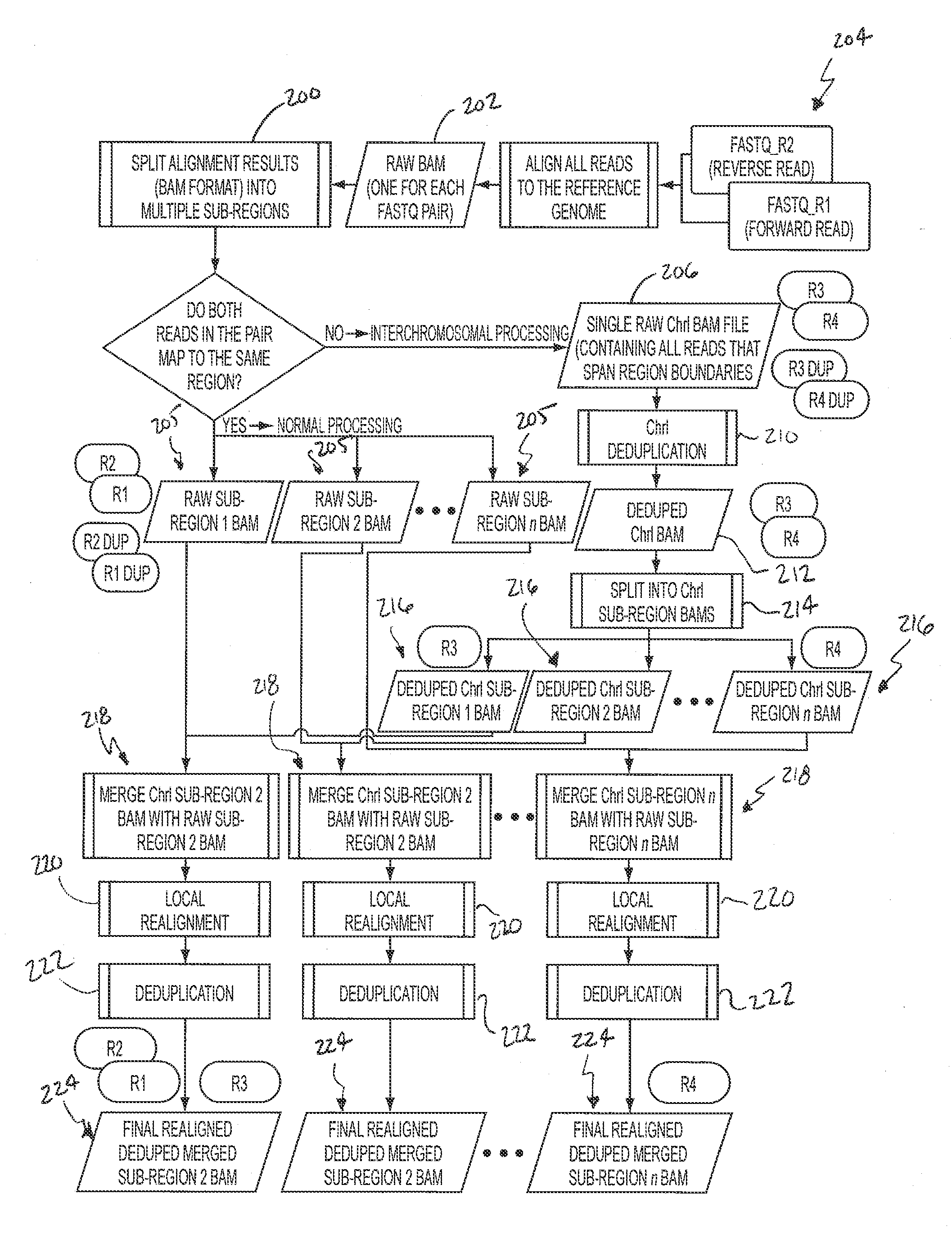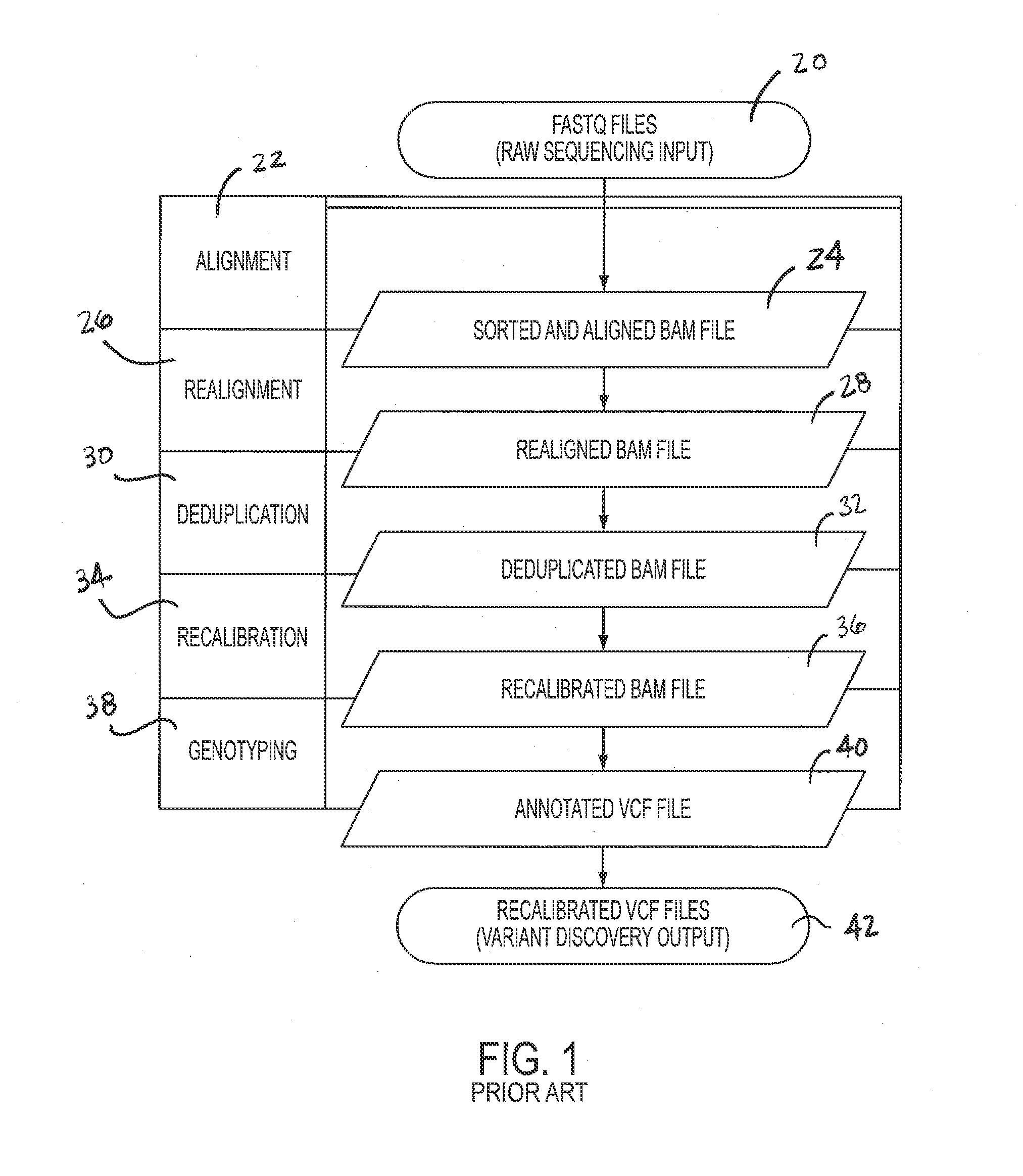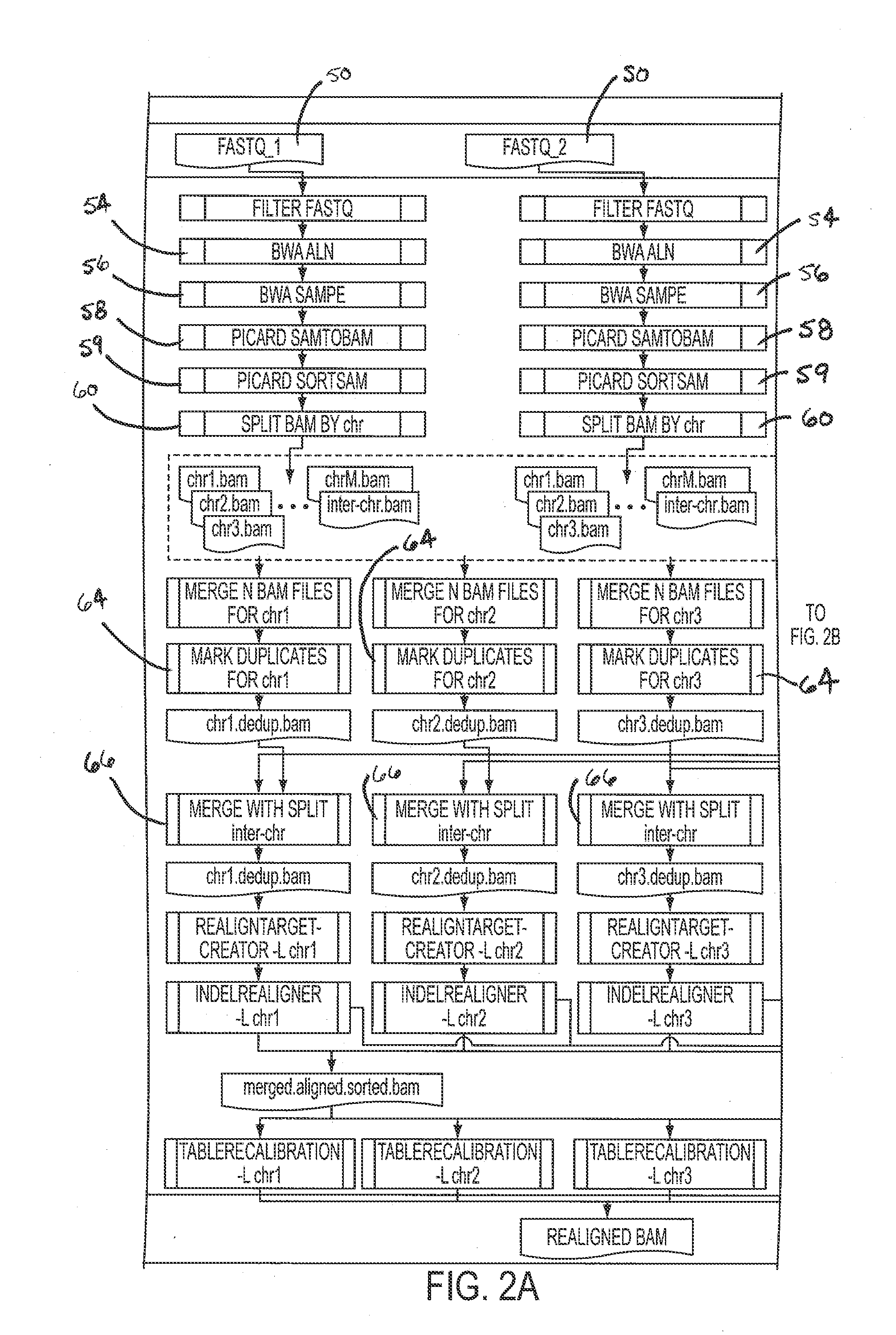Comprehensive Analysis Pipeline for Discovery of Human Genetic Variation
a comprehensive analysis and human genetic technology, applied in the field of human genetic variation discovery, can solve the problems of current approaches that can take months to complete analysis and interpretation, and the computational and bioinformatics bottleneck, so as to reduce the analysis time and reduce the analysis time
- Summary
- Abstract
- Description
- Claims
- Application Information
AI Technical Summary
Benefits of technology
Problems solved by technology
Method used
Image
Examples
Embodiment Construction
[0044]Single-Threaded Workflow—FIG. 1
[0045]A single-threaded workflow is illustrated in FIG. 1. Analysis may begin with the raw sequencing reads in the FASTQ format as shown in block 20. Data may be generated from the Illumina HiSeq 2000 by the Biomedical Genomics Core, and FASTQ files may be produced by CASAVA 1.8.2's BCL Conversion. By default CASAVA saves 4 million reads in one file, so all files may be concatenated for each read direction into a single FASTQ file.
[0046]BWA may be used for initial mapping of the reads to the reference genome. An aggressive threshold may be chosen for base quality trimming, i.e., q=15. This option may result more correctly aligned bases because more results are mapped due to the trimming of low quality ends. After running BWA aln on each read direction BWA sample may be used to produce alignment output in SAM format, which may then be converted to BAM and sorted by coordinate using SAMTools. The alignment step is shown in block 22 to produce sorte...
PUM
| Property | Measurement | Unit |
|---|---|---|
| size | aaaaa | aaaaa |
| speed | aaaaa | aaaaa |
| depth | aaaaa | aaaaa |
Abstract
Description
Claims
Application Information
 Login to View More
Login to View More - R&D
- Intellectual Property
- Life Sciences
- Materials
- Tech Scout
- Unparalleled Data Quality
- Higher Quality Content
- 60% Fewer Hallucinations
Browse by: Latest US Patents, China's latest patents, Technical Efficacy Thesaurus, Application Domain, Technology Topic, Popular Technical Reports.
© 2025 PatSnap. All rights reserved.Legal|Privacy policy|Modern Slavery Act Transparency Statement|Sitemap|About US| Contact US: help@patsnap.com



